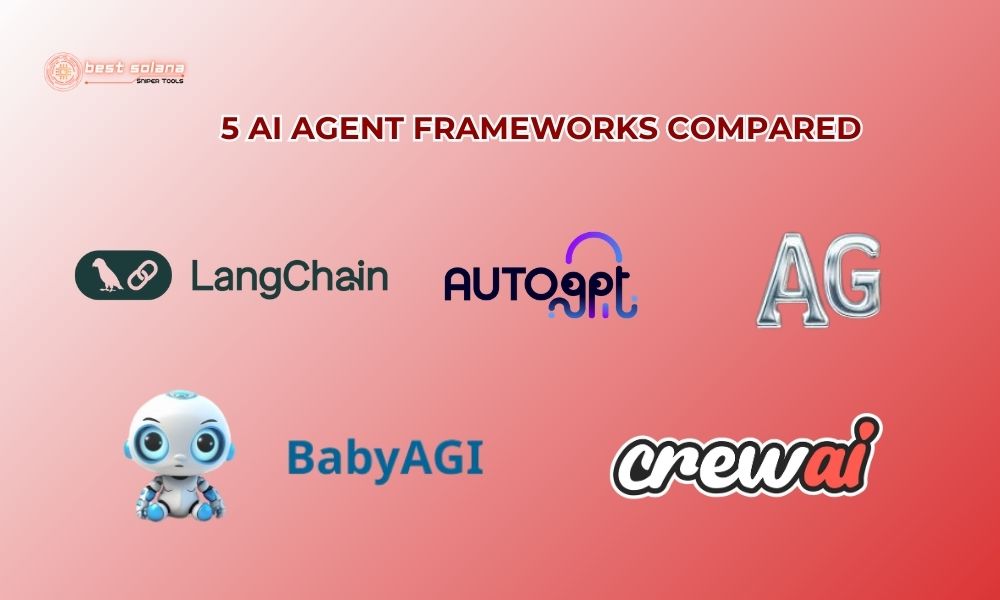5 AI agent frameworks compared: This essential analysis explores top choices like LangChain, AutoGPT, BabyAGI, AutoGen, and CrewAI. We break down their core strengths, key differences, and ideal use cases, empowering you to select the most suitable framework for your specific AI project needs and build more effective intelligent agents.
What is an AI agent framework?
To truly understand how 5 AI agent frameworks compared differ and what makes each unique, it’s essential first to grasp what an AI agent framework fundamentally is. It’s a collection of libraries, tools, and conventions designed to simplify the development process of AI agents. They provide a foundational structure, allowing developers to focus on core business logic rather than building everything from scratch, thereby significantly accelerating innovation and reducing initial setup complexities.
This foundational approach not only speeds up development but also lowers the barrier for creating sophisticated AI applications capable of pursuing complex goals with greater autonomy. Such systems often support crucial functionalities like robust connections to large language models (LLMs) for advanced reasoning, sophisticated memory management for contextual awareness, strategic task planning for structured execution, and seamless tool integration for leveraging external resources and expanding the agent’s capabilities

LangChain
LangChain is perhaps the most popular and versatile AI agent framework today. It offers a modular approach, allowing the combination of “chains” and “agents” to build complex applications.
Strengths:
- Highly modular: Easy to customize and extend with many available components (LLM wrappers, output parsers, memory managers, tools).
- Large community: Abundant documentation, numerous examples, and strong community support.
- Broad integration: Supports many LLMs, vector databases, and external APIs.
- Flexible: Suitable for both beginners and experienced AI developers.
Weaknesses:
- Complexity can increase rapidly with larger applications.
- Debugging long chains can sometimes be challenging.
Use cases: Building chatbots, document-based Q&A systems, process automation, content generation.
AutoGPT
AutoGPT was one of the first autonomous AI agent projects to make a big splash. It’s designed to achieve complex goals by autonomously breaking them down into sub-tasks, searching for information on the internet, executing code, and learning from results.
Strengths:
- High autonomy: Ability to self-plan and execute tasks without much human intervention.
- Uses internet and file system: Can access online information and manage local files.
Weaknesses:
- Prone to getting “stuck” or falling into infinite loops.
- Consumes significant resources (API tokens, time).
- Results can sometimes be unreliable or suboptimal.
- Less actively updated recently compared to other frameworks.
Use cases: Automated research, testing new ideas, automating tasks requiring web access. This makes it a notable point when we are comparing 5
AI agent frameworks for their autonomy levels.
BabyAGI
BabyAGI is a simpler AI agent framework focused on creating, prioritizing, and executing tasks based on an initial objective. It operates in a continuous loop: retrieve the highest priority task, ask an LLM to complete it, enrich the result, and generate new tasks based on the outcome.
Strengths:
- Simple, easy to understand: Clear code structure, easy to learn and modify.
- Focus on task management: Efficient in breaking down and managing task lists.
Weaknesses:
- More limited capabilities compared to LangChain or AutoGen.
- Fewer built-in tools than LangChain.
Use cases: Basic automated project management, creating smart to-do lists, a learning tool for how AI agents operate.
AutoGen (Microsoft)
AutoGen is a framework from Microsoft Research designed for building LLM applications using multiple AI agents that can converse and collaborate to solve problems.
Strengths:
- Multi-agent system: Allows for the creation of “teams” of AI agents, each with its own role and capabilities, collaborating to achieve a common goal.
- Highly customizable: Developers can define custom agents, including “human” agents for interaction.
- Supports complex scenarios: Suitable for problems requiring the coordination of multiple specializations.
Weaknesses:
- The concept can be more complex for newcomers.
- The community is growing but not as large as LangChain’s.
Use cases: Automating code writing, solving math problems, complex content creation, simulating discussions, optimizing team workflows.
CrewAI
CrewAI is an emerging framework focused on orchestrating role-based autonomous AI agents to collaborate seamlessly. It’s designed to create AI “crews” where each agent has a specific role, goal, and set of tools.
Strengths:
- Focus on collaboration: Intuitive design for building role-based multi-agent systems.
- Process-oriented: Helps clearly define steps and interactions between agents.
- Easy to use: User-friendly syntax, enabling quick setup of AI crews.
Weaknesses:
- Being a relatively new framework, its ecosystem and documentation might not be as extensive as older frameworks.
- Fewer built-in features compared to LangChain.
Use cases: Automating complex business processes, simulating team operations (e.g., marketing team, product development team), automated project management.
Which AI agent framework to choose?
When comparing these 5 AI agent frameworks, there’s no single “best” choice. The selection depends on the specific needs of your project:
LangChain: The top choice for flexibility, broad integration, and a large community. Suitable if you need to build diverse applications with high customizability.
AutoGPT/BabyAGI: Good for experimenting with simple autonomous agents or learning about their mechanics, but be mindful of their limitations.
AutoGen: Ideal for complex problems requiring the collaboration of multiple AI agents with different roles, especially if you want to deeply integrate human elements.
CrewAI: Suitable if you want to build role-based and process-oriented multi-agent systems quickly and intuitively.
Understanding your project’s goals, complexity, and available resources will help you make the most informed decision.
5 AI agent frameworks compared: this analysis has illuminated each option’s core strengths. Your final selection should align with your project’s specific needs and objectives. Keep following Best Solana Sniper to explore more exciting AI knowledge and practical applications!
